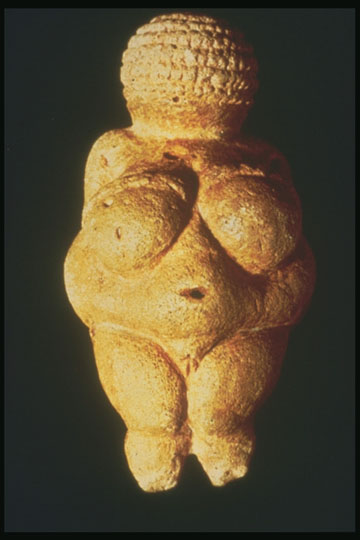 Formal analysis is an acquired
skill. Based on visual thinking, formal analysis requires the art
historian to look and look hard. The foundation of all art historical
analysis rests on the careful assessment of the physical
characteristics of an object. This evaluation will consider not only
the materials but also the process of creation and presentation of an
object. Astute formal analysis allows the historian to subsequently
consider additional influences such as religious beliefs or
socio-economic situations. Color, scale, proportion,
and line are some of the tools employed by the artist to transmit the chosen message.
Formal analysis is an acquired
skill. Based on visual thinking, formal analysis requires the art
historian to look and look hard. The foundation of all art historical
analysis rests on the careful assessment of the physical
characteristics of an object. This evaluation will consider not only
the materials but also the process of creation and presentation of an
object. Astute formal analysis allows the historian to subsequently
consider additional influences such as religious beliefs or
socio-economic situations. Color, scale, proportion,
and line are some of the tools employed by the artist to transmit the chosen message.
Art historical analysis begins with such formal analysis. The success or failure of art history derives from our ability to discuss formal issues in clear and specific language. Over the next few weeks you will be introduced to terminology and vocabulary that can ease the transfer of visual information from your eyes to your pen. Please explore and be aggressive with your language - think hard about the qualities of line and mass that capture the essence of the object - look hard at what is in front of you and use plain language to define and describe what you see. In the coming weeks we will begin to balance straightforward formal analysis against the historical arena and ask hard questions of objects and artists, questions that the first viewers could have posed, questions that help break down the barriers built over time and distance and increase our awareness of the climate that influenced the artistic decisions and the surviving objects.
Using the image on this web page, consider appropriate vocabulary for the categorization and description of visual evidence. Please prepare and bring to section a short list of formal terms that verbally recreate the experience of this object. Please remember to look hard, focusing on fundamental characteristics, and forego the temptation to explain the anthropological meaning of a feature. In addition: consider our selection of this object as the basis for our first exercise. Has this object performed satisfactorily as a touchstone for our introductory discussion of art historical practice and appropriate methodology?